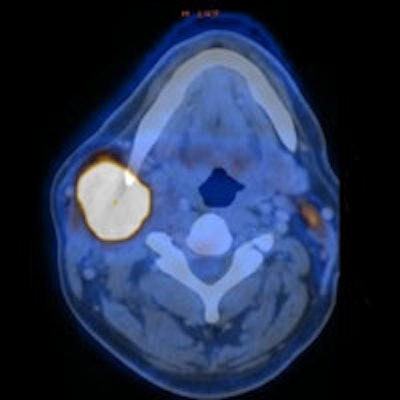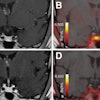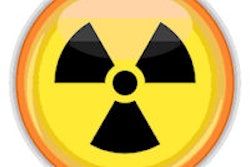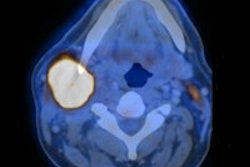
A French PET/CT study has revealed alarming gaps between radiation dose measured in different areas of the hand, calling into question the accuracy of radiation safety monitoring of staff, delegates learned this week at the Journées Françaises de Radiologie (JFR) congress in Paris.
Details about the DOSEXTEP study were published in the Monday edition of the congress daily newspaper, Le Quotidien des JFR. The researchers examined the safety of nuclear medicine staff by monitoring radiation dose in their extremities, which is fixed at 500 mS per 12 months for those in category A of exposure to ionizing radiation.
The expansion of PET/CT and the growth in its indications pose a significant dosage problem due to the high energy (y = 511 keV) of radiation stemming from FDG, explained lead author Fabien Salesses and colleagues from the imaging division at Hôpital Haut-Lévêque, Centre Hospitalier Universitaire (CHU) de Bordeaux. Legislation on extremities dosage only exists in terms of nonobligatory recommendations, because thermoluminescent dosimetry (TLD) is not optimally adapted to nuclear medicine.
The authors aimed to determine whether passive dosimetry reflected the real radiation exposure of operators.Their principal objective was to estimate the difference between FDG dose received in the first phalanx (P1) and the third phalanx (P3) of the right index finger during the same FDG dose preparation procedure for PET/CT. This was measured through two electronic semiconductive dosimeters worn by the operator on P1 and P3. The secondary aim was to study the influence of parameters linked to the product, such as volumetric activity and the influence of subject characteristics (age, gender, length of service, left or right-handedness) on the doses received in the phalanges.
The study involved 10 members of staff (eight women and two men) with an average age of 33 and working at two university hospitals (Bordeaux and Bayonne). It involved taking 287 measurements, of which 271 were included in the final analysis.
The results demonstrated that for purposes of monitoring staff radiation exposure, a significant difference may exist in the data obtained from measurements taken in P1, compared with radiation exposure measurements taken in P3. The volumetric activity of the sample taken and gender had a statistically significant influence, but one that was of low importance in terms of dose difference at P1 and P3.
Another objective was to estimate the impact of annual dose to the extremities by extrapolating from the gap between the two dose measurements. In certain cases, it was possible to extrapolate a future average P3/P1 ratio of 1.83, which would exceed the threshold of exposure or at best leave no room for any potential exposure incidents.
The authors suggest the choice of where to position a dosimeter on the extremities should be of paramount importance for optimal monitoring of radiation dose received by staff. They further report the study has revealed the necessity for rigorous scrutiny in FDG exposure monitoring, with a need to adapt material (operator dosimeter) and position (choice of hand, finger, and phalanx) to the physical gestures involved in the procedure, when staff are dosimetrically measured.
"The most pertinent means of measuring dose in the extremities should be put into place in all nuclear medicine services for staff operating radioactive material (preparation, administration), as we strive daily toward dose reduction, rather than simply remaining just below admissible levels, which as techniques and measuring systems evolve continue to be revised downwards," Salesses and colleagues concluded.



















